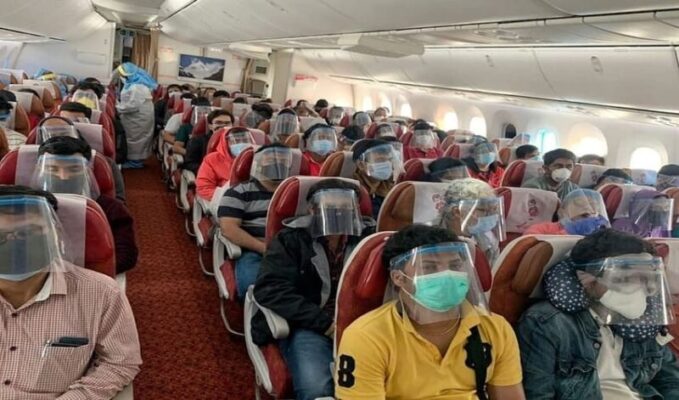As global travel begins to recover from the coronavirus pandemic (COVID-19), industry norms and rules are changing significantly. From social distancing measures at airports to quarantine and hand sanitiser in Brisbane requirements depending on your destination, there are many new travel rules to follow.
Currently, the common rule of thumb for air travel is the obligation to wear a face mask for both passengers and staff. What do travelers need to know? We have collected all the necessary information on when to wear a mask, how to use it, and where to buy it.
What are the rules for wearing face masks when flying?
Different airlines are adopting different rules with different levels of compliance, so it is best to check with your airline before the planned travel date. In general, many airlines are encouraging travelers to wear face masks while traveling until at least the end of August.
Most premium airlines will provide face masks to their passengers if they need them. Others require passengers to wear face masks and are delivering hygiene kits to everyone on board. These generally include face masks, gloves, antibacterial wipes, and gel.
You can remove the mask to eat and drink while in transit, but you should prioritize hand hygiene and distance when doing so. Check ahead if you need to bring your own supplies.
Why should I wear a mask when I fly?
According to the World Health Organization (WHO), wearing a face mask is one of several ways that travelers can help limit the spread of the coronavirus (COVID-19). Evidence shows that coronavirus is primarily a respiratory transmission disease, so wearing a mask over your mouth and nose can help reduce the risk of person-to-person transmission. It is important to wear a mask when you fly because you will often be around other travelers, and these can help create a barrier between you and another traveler’s germs. A mask, along with other preventive measures, such as safe distancing and good hand hygiene, can help protect travelers from the spread of the coronavirus.
When should I wear a mask?
Do I need to wear a mask to get to and from the airport?
Wherever you are, you will surely need to wear a mask for the duration of your plane trip. But it is very likely that you should also use it on your trips to and from the airport.
It is now mandatory to wear face masks on all public transport in most countries, and passengers who do not comply are at risk of being fined. Face masks are also mandatory on many ridesharing services like Uber. Check the websites of the local health department in the cities you travel to, as well as travel tips for destination-specific advice.
When do I need to wear a mask when I’m at the airport?
Rules vary depending on airports, but in general, face masks must be worn from check-in onwards.
Once boarding, passengers are generally asked to keep their mask on throughout the flight and until the end of their journey.
Check the websites of your departure and arrival airports, in addition to the airline you choose, and always have your mask on hand in case you need to put it on. If you don’t want to make mistakes and as a precaution, consider using it at all times.
What should I look for in a mask?
Disposable versus reusable: are they for single-use, are paper masks better or better a cloth mask?
Almost complete protection against respiratory infections can only be provided by N95 respirators, which fit properly and are generally used by healthcare workers. Since medical workers need these masks, and experts say that a normal citizen does not need a surgical-grade mask, those of us not on the front lines of the pandemic will wear disposable paper masks or reusable, washable cloth masks.
Evidence suggests that both types of masks protect others from you if you are carrying the virus. If an infected person sneezes in an airplane, the risk of transmission is much lower if they sneeze in a mask than in the air. It is suggested in a lot of researches that wearing a mask can reduce transmission by up to 79 percent. However, some materials can trap virus particles better than others, so keep that in mind when purchasing a cloth mask.
Remember that if you wear it for a long period, a cloth mask should feel comfortable and breathable. A 100% cotton face mask should fit the face and make sure it is machine washable.
There is also an environmental incentive to buy cloth masks. Investing in reusable face masks dramatically reduces the impact on plastic waste and climate change.
How to know the effectiveness of a mask?
The effectiveness of wearing masks, not counting surgical ones, is still being investigated. While non-surgical ones cannot fully protect you from inhaling virus particles, the CDC suggests that any coverage, even a scarf, is better than none. The general consensus is that the more the mask fits, the more effective it is.
Keep in mind that a disposable medical mask can although block moisture droplets, there is still a risk of inhaling the virus since the sides of the mask are not completely sealed. The same goes for a cloth one, although for homemade masks, different materials eliminate different levels of viruses and bacteria. A US study compared them and found that good options include multiple layers of material and cotton.
When you buy non-surgical grade masks, their effectiveness will be listed in their description, as well as the percentage of particles they are expected to block. So always read and compare the fine print.
Where can I buy a mask?
Disposable face masks are available in drugstores and supermarkets, but as their use might be the norm, many shoppers are turning to the Internet to buy reusable, machine washable fabric masks.
Online is a good option to start and dig a little deeper to invest in face masks made by independent creators or companies with a charitable element.
How to wear a mask?
If you need to wear a face mask, it is important to make sure that you are wearing it correctly and following the instructions on how to put it on, take it off, and, in the case of reusable masks, how to make sure you can use it again. The WHO offers comprehensive guidelines and also easy-to-understand instructional videos, so you can learn exactly how to wear a face mask.
How do I put the mask on?
A face mask or cover should completely cover the nose and mouth but still allow for comfortable, unobstructed breathing.
- To start, wash your hands or use disinfectant. The WHO recommends rubbing your hands with alcohol for 20 to 30 seconds or washing your hands with soap and water for 40-60 seconds.
- Then make sure your mask is clean and undamaged, this means you shouldn’t have used it previously without washing or replacing it. If you have already used your mask and did not wash it, you should wash it before using it again. If you wear disposable masks, they are for single use only, and you should get a new disposable face mask every time.
- Put on the mask and secure the rubber bands behind each ear or behind the head, depending on the type of mask. The mask should cover the nose and mouth and fit snugly over the chin, with no open space on the sides.
- For disposable medical masks, the flexible metal part must pass over the bridge of the nose, and the white side of the mask is usually the inside; the blue side, the exterior. Pinch the metal part at the bridge of your nose so that it conforms to its shape.
- Avoid touching your mask every time you use it.
- If your mask becomes dirty or wet, be sure to replace it with a new one.
How do I test mask fitness to maximize protection?
Your mask should completely cover your nose, mouth, and chin, and should fit snugly behind your ears or head. There should be no gaps on the sides of your mask. The WHO reports that if there are gaps, the mask will not be effective in preventing respiratory drops from reaching you or spreading to others. If your mask doesn’t fit properly, don’t wear it, and be sure to find an alternative face mask or cover that fits better.
How do I safely remove my mask?
Just like putting on a face mask, you should also be careful when removing it to avoid possible contamination.
- Wash your hands or use a disinfectant, just like you did to put on your face mask.
- Without touching the front of the mask, remove it behind the ears or head, separating it from the face. Continue to hold it by the rubber bands.
- For single-use medical masks, you should discard them immediately after use, preferably in a container where you can close the lid.
- For cloth masks, put used ones in a zip-lock plastic bag until you can wash it. When you wash it, remove the mask from the plastic bag with only the rubbers and wash it in hot water with detergent.
Can I use my mask more than once?
You should not reuse your mask once you have used it. However, a reusable cloth face mask can be reused, although you should make sure it has been washed after each use, ideally in hot water (at 60 degrees) with detergent.
You should never ideally wear a disposable mask more than once. Always dispose of them properly after each use.
How often should I be washing my mask?
You should wash your reusable cloth mask after each use. For example, if you’ve spent all day wearing it, you should wash it when you get home before putting it back on. It is recommended that you wash the cloth mask in hot water with detergent to guarantee its cleanliness and to be able to use it again. It is better to have two or three masks in rotation so as not to risk running out of anything.
How do I safely dispose of my mask?
The WHO advises that for disposable masks, you should first wash or disinfect your hands with an alcohol-based gel. Then remove the rubbers behind the ears or head without touching the front of the mask, and holding the rubbers, dispose of it in a garbage container, ideally with a lid.
What are other ways to stay healthy in flight and at the airport?
There are many practical steps you can take. Wash your hands regularly (with soap and water or an alcohol-based gel), avoid touching your eyes, nose, and mouth, and stay at least two meters from someone who is coughing or sneezing. You should also bring your own food and drinks when possible, including a refillable water bottle.
WHO offers comprehensive guidelines on how to reduce the risk of transmission and infection in public places. We recommend that they continue in transit, as well as in any public space, as long as the coronavirus remains a threat.
In general, wearing a face mask does not guarantee that you are protected against coronavirus infection or any other respiratory disease. But research shows they can significantly reduce virus transmission, especially when they’re well adjusted, washed regularly, and combined with good hand hygiene and other precautions, such as distancing.
Many governments still advise against all non-essential international travel, as the pandemic continues. If you decide to travel, it is up to you. You can consult websites such as the WHO, the Ministry of Health or the Ministry of Foreign Affairs to help you make your decision and make your trip as safe and comfortable as possible.
Lokesh is the founder of Chandan Roli. His passion for traveling and art made him bring the best travel facilities in India for Indians and for all who want to explore the beauty of Indian temples with great customer services.





